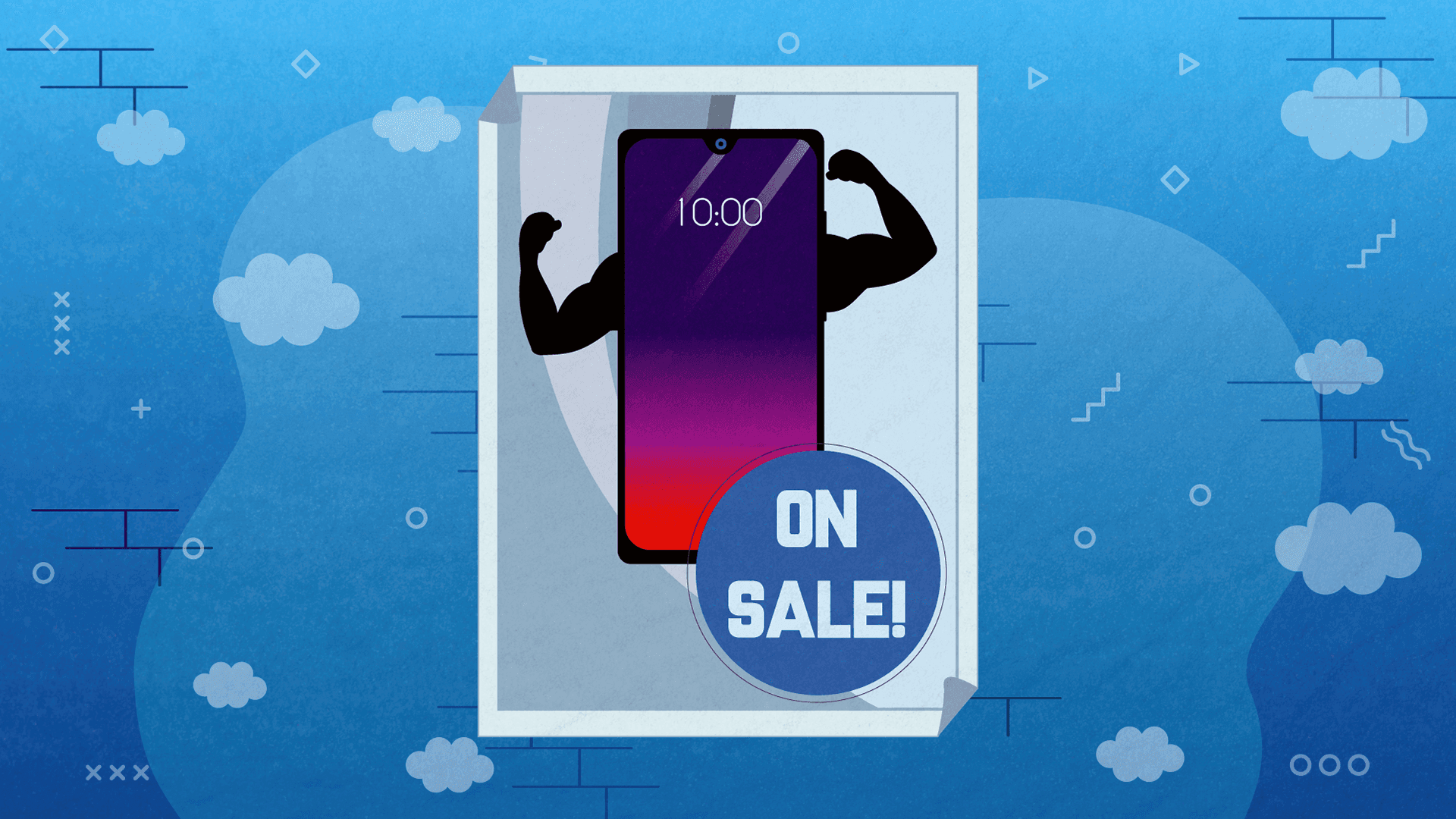4 Things that Can Make or Break Your Mobile App

Every business in the world could benefit from having a mobile app. From mom and pops stores, to online casinos, healthcare, and fintech companies - everyone needs some type of mobile solution to help their customers/business partners/employees access relevant information natively on their mobile devices.
According to Statista, there will be more than 287.1 million mobile internet users by 2023. And that’s just in the US alone. This means that roughly around 87% of people living in the States will be accessing the internet primarily via their mobile devices. If nothing else, this piece of information proves that the mobile app arena will become an even bigger asset for both the users and businesses.
Even though there’s more than enough evidence to immediately start building your business mobile app, it’s important to have in mind that this is never an easy process.
Statistically, Your Mobile App Development Project Will Likely Fail

Building and launching a mobile app is like building a house of cards. One wrong move and the entire thing comes crumbling down.
Gartner’s study from 2018 has revealed that the mobile apps’ commercial success for the year was 00.01 percent.
That’s not great.
To build a successful app in today’s world, you need the right plan, the right tools, and the right team. If you don’t have the right strategy at the place, you won’t be able to get your project off the ground.
A lot of enthusiastic entrepreneurs struggle to properly conceptualize their strategy and guide their mobile app projects past the first few weeks of development.
At Share IT, we’ve inherited a lot of problematic projects that were stuck in development hell. We helped several customers overcome difficult development challenges and finalize their fantastic apps.
Looking back at some of the customers we helped out of these difficult situations, similar patterns kept emerging. Lots of these customers were victims of the same planning and execution errors that we were able to pinpoint and resolve for them.
With that in mind, we decided to group some of them and produce an article for our blog that will contain answers to why these specific problems have emerged and how to overcome them.
1. Weak Planning and Research
Like with every other project, you need a strong business plan. Without direction, goals, and a clear plan of action, you have zero chances of making a good app.
Lots of business owners and entrepreneurs get overly excited about the idea of building an app so they tend to prematurely jump into the development process without first taking enough time to properly draw out a strategic plan to keep their team aligned throughout the entire project.
If you don’t want to see your app crash and burn before it even sees the light of day, find the time to answer the following questions:
1. Who is the End-User of this App and Why?
Taking the time to properly think this through will help you gain key insights that could strengthen your idea and lead you onto new, unexpected paths.
2. What’s the Point of this Product? What Problems Are We Solving?
Every app needs to have a clear purpose. Regardless of how cool your idea sounds, if it doesn’t help people overcome specific challenges, you’re wasting your time. In addition to that, the challenges that you’re trying to solve the need to be complex and regular enough so that your audience will continue to use the app. You don’t want to create something that’s used once and never again.
3. How Will Your App Help Your Target Audience?
Before you go into development, you need to have a crystal clear idea regarding how your product will help ease your target audience’s pain points. The more specific your solutions are, the better. To make your project doable, think about 3 or 4 core features first that you must have from the start. Once you do that, plainly outline them and hop a call with your team to make sure everyone understands what you’re trying to create and why.
4. What’s Your USP?
If you want to generate interest from your audience, you need to have an actual hook. You need to provide them with something that they currently don’t have at their disposal. Figure out how your audience is currently battling with the specific problems that you’re trying to solve for them. Are they using any apps or tools now for this? If so, what are those tools and apps? How do they rank against your solution? Try to understand your potential competitors from the start and how to build something unique. Something that people don’t have. Once you do that, you’ll be able to easily stand out from the crowd.
2. Opting for the Wrong Platform

This one is sort of tied to the previously mentioned points. As we wrote above, everything starts with research. If you don’t do a good enough job learning in advance whom you’re exactly targeting, you’re destined to fail.
The wrong choice of platform is one of the biggest reasons why some apps fail. Regardless of how hyped you and your team are about a specific idea, if you don’t do thorough market research there’s a chance you’ll end up with a dud.
Something you think would make a perfect mobile app, might not even be suitable for mobile devices at all. Whether your app is for desktop, web, or mobile devices should be a decision you make based on your target audience and the specific type of problems you’re trying to solve.
Knowing which platforms your users prefer is a major factor that influences your success. Statista’s study has shown that only 32% of users return to an app 11 times or more. If you want to be in those 32% percent, don’t skip on the homework. Invest the time to research which platform will bring you the best results, or talk to a specialist who can advise you. Our team of expert developers is always available for a chat! Feel free to reach out to us here!
3. Testing
The same Statista study claims that 25% of all downloaded apps are only used once. That means you’ve got one shot to make a user fall in love with your app before you lose him forever.
To make a good first impression, you need to provide a seamless experience. You need to present the user with a smooth, error-free ride. To do that, you need to give your development team enough time to properly test the product and remove all the glitches along the way. If one of those glitches occurs during your customers’ first use of the app, you can pretty much guarantee it’ll never be used again.
Your app might sound cool in the concept phase, but until you test everything, how can you tell what needs improving? And until you’ve tried it out on real users, how can you know if you’ve created something that serves a purpose for your target audience?
Before you start testing though, there are a few things you should do:
Connect with experienced developers who know what to test and what questions to ask. They will help you think like your users and understand what actions they may take, as well as the problems they may face.
In addition to this, you should also focus on the core elements of your app, like the features. It’s important to figure out how your features relate to the core objectives and purpose of your product. Think about the security aspect of your app as well and consider how best to introduce updates.
4. Marketing

Marketing is a huge aspect. Currently, there are over 3.48 million apps in the Play Store and 2.22 million apps in Apple’s App Store to choose from. The competition is fierce. Getting discovered is becoming by users has become an insanely difficult task for businesses of all shapes and sizes.
That’s why, in this day and age, it makes zero sense to launch an app if you don’t have a rock-solid marketing strategy already in place.
You need to figure out how to immediately spark interest from your target audience and how to stimulate them to talk about your app online. You can do that by deploying everything from targeted social media ads to content marketing strategies. There are many ways you can capture your desired user’s attention.
What you need to do if you want to be successful is:
-
Choose the right channels to promote your product and deploy platform-native campaigns. If you want to leverage the potential of each channel, you have to have a strategy that makes your presence on it feel native. You have to obey the rules of each platform and communicate your values like a native user.
-
Proper app store optimization. Your presence in the app stores will be the ultimate deciding factor when a user is considering downloading your app.
To stimulate more downloads, you need to go the extra mile and provide as much info about your app as possible. From your logo to your description, your title to your screenshots, every piece of your profile should be optimized to capture your audience’s attention.
Over to You
Thank you for taking the time to read our latest article. You know what are the 4 key factors you should focus on when building your app. If you feel like you need help with any of these elements, feel free to reach out to us. Our experts will help you conceptualize, execute, and promote your dream app!